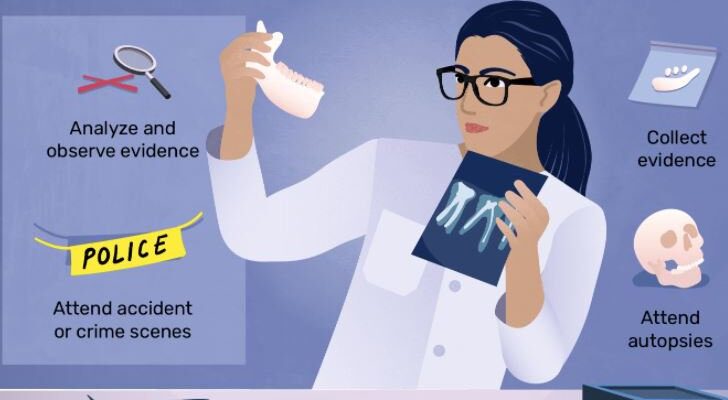– Dr. Fatima Abrar Hashmi
Introduction
Forensic Odontology includes collection, management, evaluation and presentation of dental evidences in legal and criminal cases. Presently, it plays a vital role in identification processes such as identification of deceased, age estimation (living and deceased), sex determination, occupation detection, bite marks analysis, child and spousal abuse cases in illegal immigration & criminal cases and disasters.


Applications in dentistry
- A forensic dentist needs to know different concepts such as preservation of dental records, dental identification processes, legal & criminal issues and basic principles of forensic sciences
- Dental evidences are very significant in pensions, criminal cases, marriage, burial, life insurance, closure of life and human rights for social reasons.
- Dental identification can have three main applications as mentioned below:
- Comparative Identification
- Postmortem Profiling
- Mass Disasters Identification
Comparative Identification:
It is the most common method used in dental identification, in which the postmortem dental evidences of an individual are compared to the ante-mortem, in order to find whether both evidences match and belong to the same individual.
Postmortem Profiling:
If ante-mortem records are not accessible, then this method is applied. It helps to narrow the search for an individual. It is like reverse engineering using experts.

Mass Disasters Identification:
It is very complicated process, in which postmortem profiling, comparative identification and other methods are used to establish identity of many individuals.

Dental identification
It is believed that dental identification plays an important role in cases with lack of fingerprinting or other evidences due to dismembered or decomposed bodies and burns. The identification in these cases can be done from hard tissues of body which can survive the drastic conditions. It is due to durability of teeth. It can endure these conditions and be practically intact for a long duration, after other soft tissue and skeletal tissue have been damaged by incineration or decomposition.



‘Final Conclusions’ of Dental Identification
A forensic dentist must draw final conclusions of dental identification as per the guidelines proposed by the American Board of Forensic Odontology .
As per the guidelines of American Board of Forensic Odontology (1994), the following conclusions can be stated:
- Positive Identification: The ante-mortem and post-mortem evidences match adequately without inconsistencies.
- Possible Identification: The ante-mortem and post-mortem evidences are consistent, but it is not potential to establish identity positively.
- Insufficient Evidence: The evidences are inadequate to draw a final conclusion.
- Exclusion: The ante-mortem and postmortem evidences are obviously conflicting.

Conclusions
Forensic dentistry plays a main role in the identification of those people, who cannot be identified by other means. The teamwork of dentists and other forensic experts must be implicated to attain correctness, for positive identification of vital. Precise, proper and complete ante-mortem dental records are important components for identification. Proper knowledge of dental identification methods is significant in this process.

















Comments